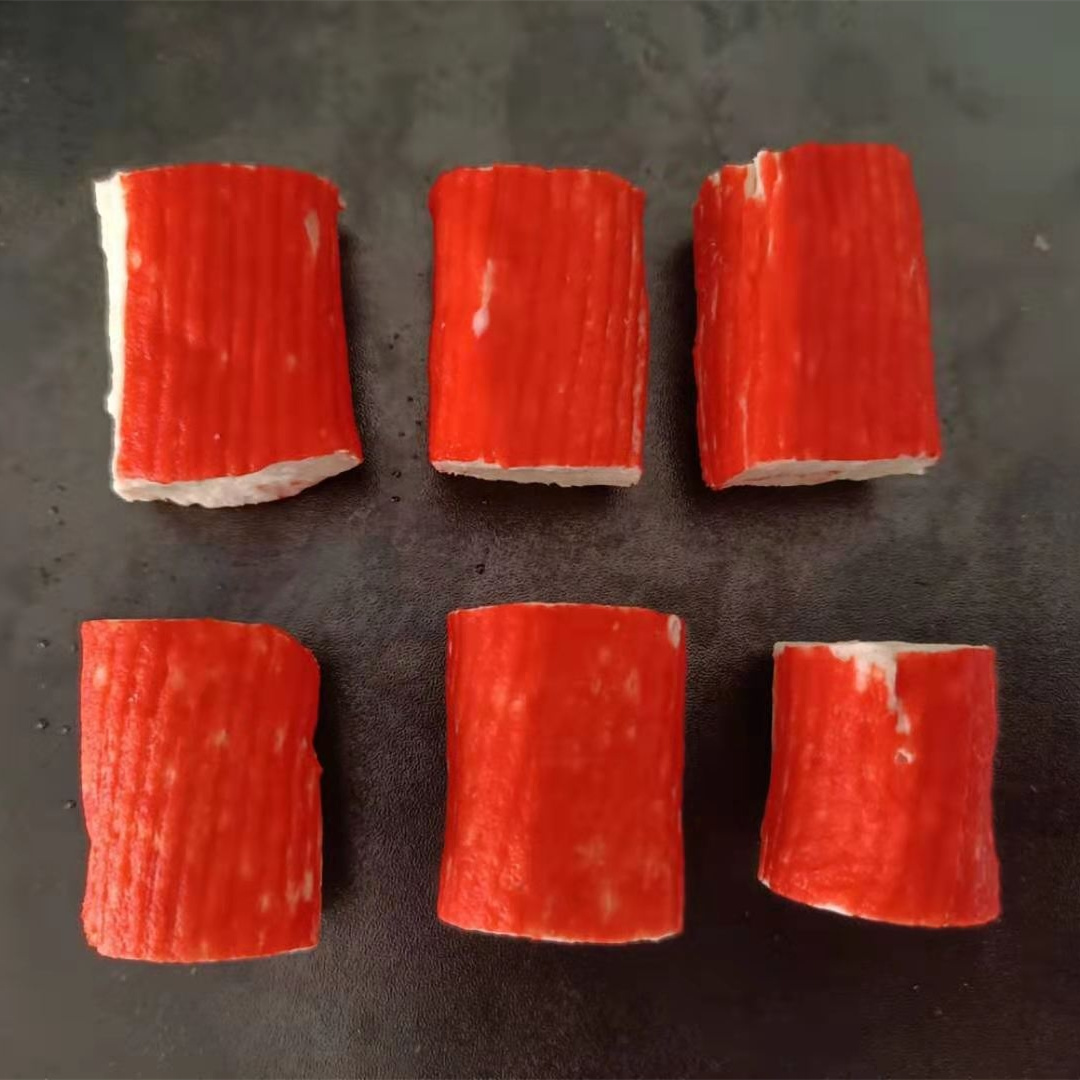A Trusted Friend in a Complicated World
RD.COM Food Food Tips Fast Food Restaurants Open 24 Hours

Our editors and experts handpick every product we feature. We may earn a commission from your purchases.
Imitation crab: It’s pretty upfront about the fact that it’s not the real thing. What seems unclear, though, is what exactly imitation crab meat is made of. So, what is imitation crab, exactly?
When it comes to food facts—like what are wasabi, sashimi, cheese curds and pork rinds, really?—you’ve come to the right place.
While it may seem like fake, processed food, indicative of modern cuisine, the roots of imitation crab go back hundreds of years to a substance called surimi. Surimi is a paste made from minced and washed mild white fish—typically pollock, but sometimes cod or tilapia—with additives to extend its shelf life. The main ingredient is usually Alaskan pollock or another type of white fish.
Japanese chefs originally created surimi to make use of extra or leftover fish fillets. It has been considered a delicacy for more than 900 years, and it’s still used in many popular Asian dishes, such as fish cakes. Chefs eventually stabilized the recipe and introduced it to other countries in the 1970s and ’80s, when it gained popularity in the United States as the foundational ingredient for imitation crab.
You’ll find surimi products clearly labeled as imitation or as a “processed seafood” or “fish protein,” per FDA policies. When dining out, be sure to ask waiters or other service staff if you’re getting the real deal or not. While it’s not the fresh, unprocessed original and will never taste exactly like real crab, many diners find that imitation crab is a satisfying, versatile and low-cost alternative.
Here are a few foods and dishes you’ll likely find imitation crab in today:
Don’t miss these other facts you didn’t know about the origin of your favorite foods.
Imitation crab isn’t just surimi, so what is it made of that’s not natural fish? To achieve that unique crab flavor and consistency, food manufacturers now use additives that often include:
The substance is then molded and cut into chunks or strips that mimic real crab. It may also include MSG, says Amy Leigh Mercree, a holistic health expert and bestselling author. “MSG, or Monosodium glutamate, is sometimes labeled as ‘natural flavors,'” she says. “Some people have an intolerance to MSG that induces headaches, nausea or dizziness.” She warns that people who experience this may want to avoid imitation crab.
The difference between imitation crab and real crab is, well … pretty simple: One is real crab meat, and the other is not.
The biggest draw of imitation crab is the difference in price—it’s usually about one-third of the price of real crab meat. At-home cooks and restaurant-goers alike enjoy it in dishes like sushi or seafood salads, but nutritionally, you do get what you pay for. Although imitation crab is low in both fat and calories, Mercree says that real crab has much more protein, fewer carbs and less sodium and sugar than the imitation.
“It also lacks many of the nutritional benefits found in real crab, including trace minerals, zinc, selenium and B vitamins,” Mercree said. “Nutritionally speaking, crab is a better option.” Here are more facts about seafood that will change the way you eat fish.
While strict vegetarians and vegans should steer clear of imitation crab because it contains fish, pescatarians are free to go for it.
Diners should also keep in mind that “crabstick” or “krab,” as imitation crab is sometimes called, is a much more highly processed food and is not vegan or gluten-free unless specifically marked as such.
While imitation crab isn’t as nutritionally valuable as real crab meat, it is low in calories and fat, making it relatively good for you (or at least not bad for you).
Imitation crab is precooked, so it’s easy to use, either chopped up or whole, in any dish of your choice, such as a crab salad or homemade California rolls with avocado. You can add it directly from the packaging to a cold dish, or heat it up to your liking.
Want more food facts? If you’re curious about what’s really in pine nuts and caviar, read on. Plus, is eggplant a fruit?
Why to Avoid All-You-Can-Eat Sushi
We are no longer supporting IE (Internet Explorer) as we strive to provide site experiences for browsers that support new web standards and security practices.

Family Meals Fast Food We recommend our users to update the browser.